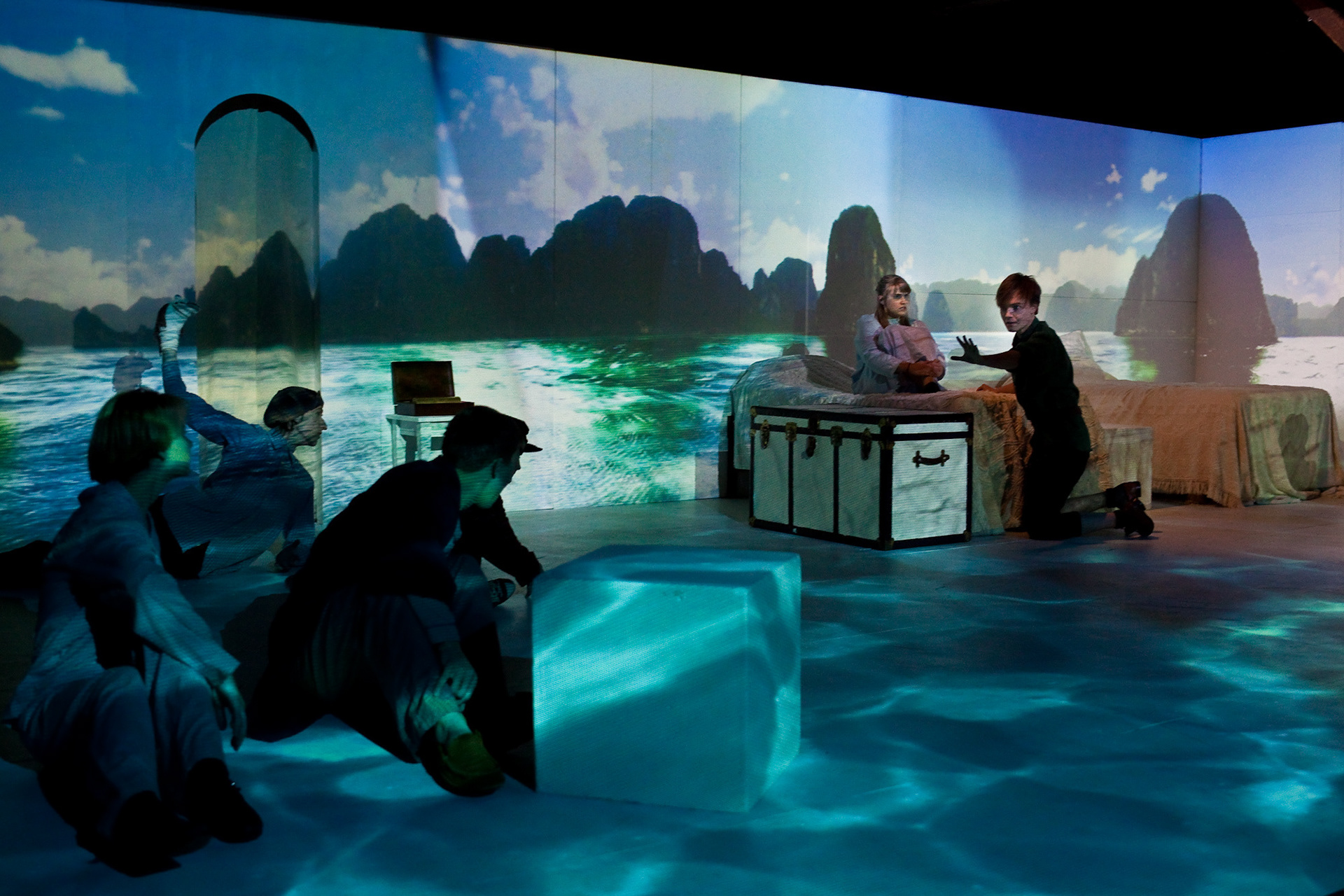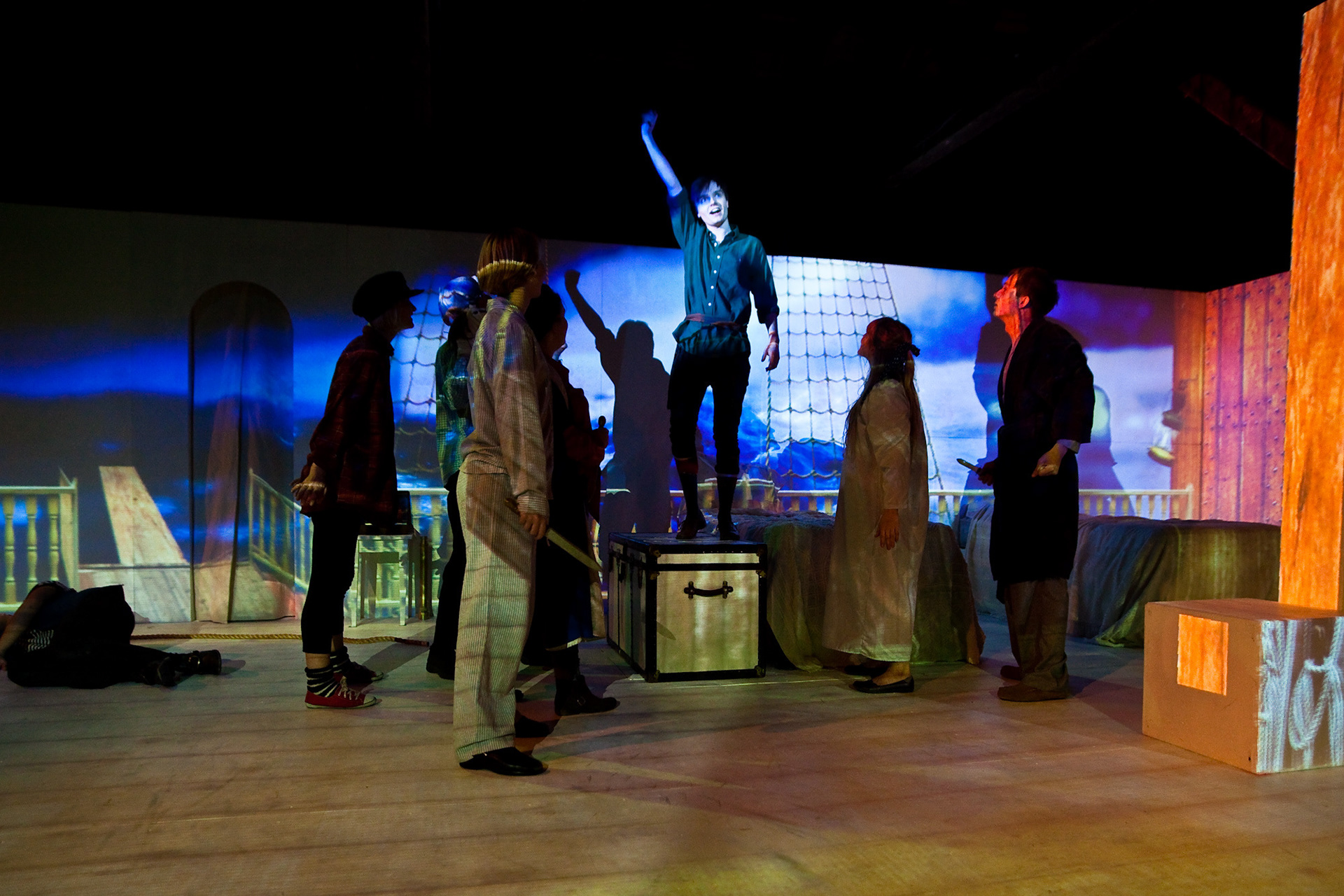







The myth of Peter Pan is renowned, and yet largely unknown. Few things are as iconic as that lost boy in green, fairy in one hand and sword in the other. Yet, the image we have passed down to us is very much at odds with what J.M. Barrie put to paper in that first draft. Influenced by casualties of the Great War, steeped in Edwardian era gender ideology, and confronted by an anxiety over the end of the American Frontier, Peter Pan in today’s context is itself a play which will not grow up. As part of my Master’s thesis at the University of California, Santa Cruz, the rustic Barn Theater was given a full digital overhaul – six projectors to create an immersive space. Projected media in live theater today is becoming both inevitable and impossible. At its core, the digital image is real, but in all the wrong ways; it is empowered by detail, and yet crippled by its lack of “liveness.” As such, when framed within the vulnerable stage, it often appears as oppressive, telling the audience what to see, coming to you not as a welcoming journey of discovery, but as my words are coming to you now – absolute, direct, and not at all theatrical. It can forget the fundamental truth of theater: because nothing is real on stage, everything is. What audiences experienced during Peter Pan was an experiment, both in raw technological apparatus, but also in how we use technology to help tell stories. Rather than try to tell you what Neverland is – to pin it down and define it – our version of Barrie’s classic story presented only a glimpse. The projections were not Neverland as it is, but Neverland as our Wendy believes it to be. It exists for us only as it exists for her, as in all children.







